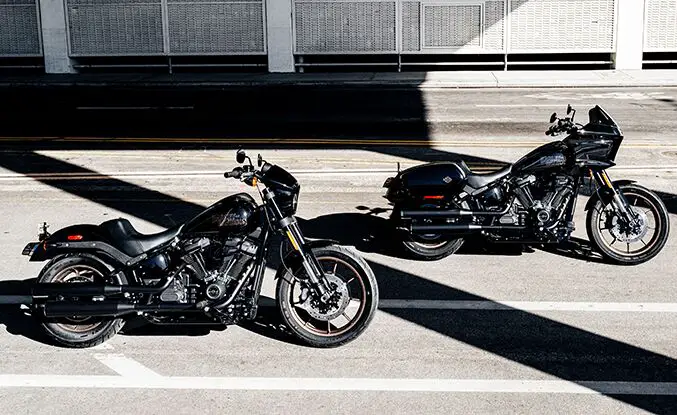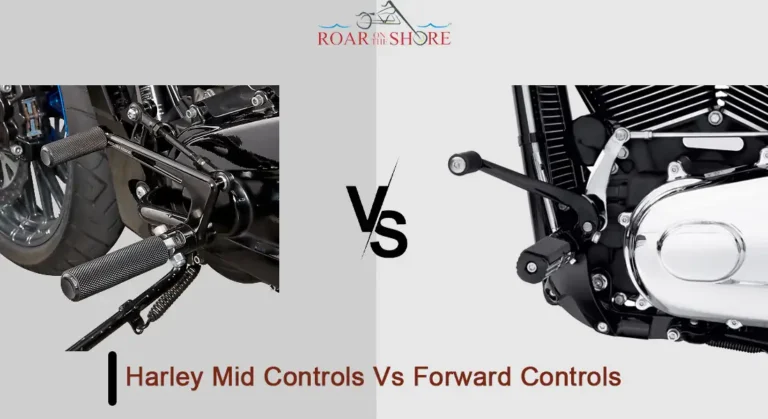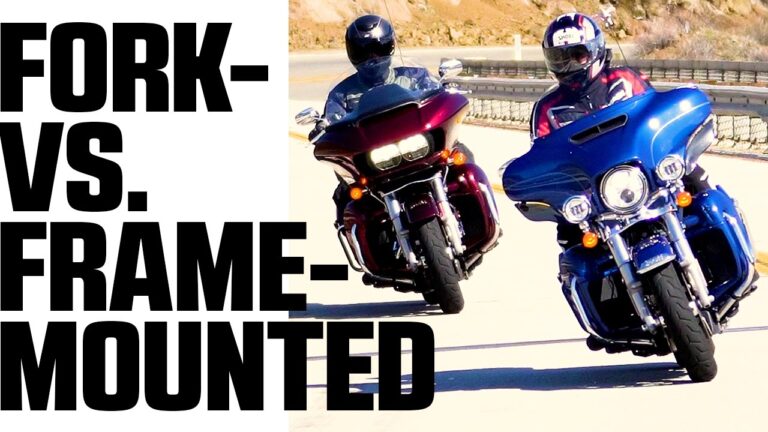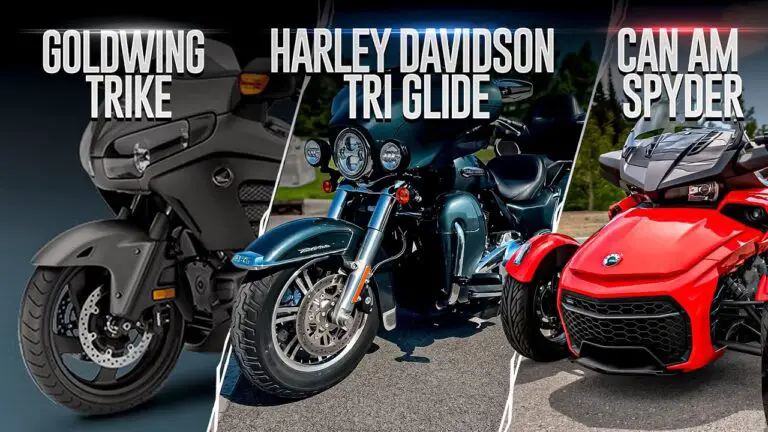Bias ply tires offer a traditional, sturdy structure, while radial motorcycle tires provide enhanced grip and stability. Radials are modern, optimized for performance, and usually last longer than bias ply tires.
Choosing the right motorcycle tires is crucial for both safety and performance. Motorcycle enthusiasts often confront the decision between bias ply and radial tires. Each type features distinct construction and material differences, significantly impacting riding experience. Bias ply tires, made with layers of fabric that crisscross at an angle, are known for their durability and sidewall strength.
On the other hand, radial tires, with steel belts running at a 90-degree angle to the tread, excel in heat dissipation and provide better traction and fuel efficiency. Riders should consider their motorcycle type, riding style, and typical road conditions when selecting between these two classes of tires. Understanding the advantages of each can lead to a more informed choice, ensuring a balance of safety and performance on the road.
Introduction To Motorcycle Tire Technologies
When it comes to motorcycles, the tires play a pivotal role in keeping riders safe. As technology has advanced, so have tire designs, offering better performance and durability. An introduction to motorcycle tire technologies lays the foundation for understanding how important tire choice is to the riding experience.
The Evolution Of Motorcycle Tires
Motorcycle tires have come a long way since their inception. Early tires were simple, solid rubber strips. Today’s tires showcase layers of complex materials. They must manage speed, weight, and weather conditions.
Overview Of Bias Ply And Radial Tires
Two main types dominate today’s market: bias ply and radial tires. Bias ply tires feature a diagonal construction providing a pliable ride. Radial tires, on the other hand have belts running perpendicular to the tread. This offers improved stability and fuel efficiency.
- Bias Ply Tires:
- Diagonal layers of fabric
- Durable sidewalls
- Traditional look and feel
- Radial Tires:
- Belted construction for strength
- Less rolling resistance
- Better at higher speeds
Importance Of Choosing The Right Tire Type
Selecting the right tire can transform a motorcycle’s handling. A tire’s build affects grip, longevity, and fuel consumption. Riders must consider their usual routes and riding style to select a perfect match. Whether it is touring, commuting, or off-roading, tire type influences performance.

Credit: www.revzilla.com
Understanding Bias Ply Tires
Tires keep motorcycles steady on the road. It’s vital to know how they are made. Bias ply tires are one such type, with a specific construction method that sets them apart from radial tires. Diving into the construction and design of bias ply tires helps riders pick the right tire for their needs.
Construction And Design Principles Of Bias Ply Tires
The makeup of bias ply tires is unique. Layers, known as plies, are placed at a diagonal angle from the tire bead. Each layer crosses the one below, forming a crisscross pattern. This design offers flexibility and durability.
- Diagonal layering for resistance to impact
- Flexible sidewalls for a smooth ride
Advantages Of Bias Ply Tires
These tires boost performance in many areas. They can handle heavy loads due to their strong sidewalls. This makes them perfect for loaded touring bikes. Their design also lends to a more comfortable ride over rough terrain.
- Heavy load capacity for touring
- Comfortable on uneven roads
Limitations And Ideal Usage Scenarios For Bias Ply Tires
While these tires are tough, they’re not for every bike or road. They can heat up quickly at high speeds which affects longevity. These tires shine in cruising and non-sport scenarios.
- Prone to heat build-up at speed
- Best for low-speed cruising
Exploring Radial Tires
Let’s dive into the world of radial tires and discover what sets them apart. Radial tires have revolutionized the motorcycle experience. Understanding their structure and benefits is key to choosing the right tire for your ride.
Construction And Design Principles Of Radial Tires
At the core of radial tire technology is the unique way they’re built.
- Casing ply cords extend from bead to bead at a 90-degree angle to the direction of travel.
- Steel belts are placed under the tread to stabilize the crown of the tire.
- The design allows sidewalls and the tread to function independently.
Benefits Of Radial Tires For Motorcycles
Radial tires bring numerous advantages to motorcycles:
- They reduce fuel consumption due to lower rolling resistance.
- Better handling allows for a smoother ride.
- Their structure provides longer tread life.
- Improved safety with better traction in wet and dry conditions.
Drawbacks And Optimal Conditions For Radial Tire Performance
Radial tires are not without their trade-offs:
| Drawback | Solution |
|---|---|
| Higher cost compared to bias ply tires | Invest for long-term benefits |
| Less sidewall protection | Optimal for smooth, paved roads |
| Sensitivity to road imperfections | Maintain proper tire pressure |
Choose radial tires for high-speed stability and a performance-focused ride.

Credit: m.youtube.com
Comparing Bias Ply To Radial Tires
Bias ply and radial tires are two different breeds of tires found on motorcycles. Exploring their differences is crucial for riders who prioritize performance, durability, fuel efficiency, and comfort.
Performance: Traction, Stability And Cornering
Bias ply tires possess a more rigid construction. They offer consistent traction on straight roads. Radial tires, with flexible sidewalls, enhance stability and cornering. They respond to road inconsistencies better. Riders often feel more in control during twists and turns with radials.
Durability And Wear Patterns
- Bias ply tires tend to show more even wear due to their sturdy design.
- Radial tires might wear quicker on the center tread due to a flatter profile.
Assessing wear patterns helps predict tire life and plan replacements accordingly.
Impact On Fuel Efficiency And Ride Comfort
The structure of radial tires usually results in less rolling resistance. This can lead to better fuel efficiency. Their flexible sidewalls also absorb road bumps, leading to a smoother ride. The rigid nature of bias ply tires can decrease fuel economy but provide a feeling of strength under heavy loads.
Compatibility With Different Motorcycle Models
| Motorcycle Type | Bias Ply Compatibility | Radial Compatibility |
|---|---|---|
| Classic Models | High | Low |
| Modern Performance Bikes | Low | High |
Certain older bikes are designed with bias ply tires in mind. While most modern bikes lean towards radial tires for their flexibility and grip.
Making The Right Choice For Your Motorcycle
Making the right tire choice is vital for a safe and enjoyable motorcycle experience. Whether you prefer a leisurely cruise or an adrenaline-pumping race, the type of tire fitted on your motorcycle can make a huge difference. Traditionally, riders choose between bias ply and radial tires, each with distinct advantages and drawbacks. Let’s dive into the details to aid in your decision-making process.
Factors To Consider When Selecting A Tire
Several key factors influence tire selection:
- Riding Style: Fast riders need tires that handle well at high speeds.
- Motorcycle Type: Different bikes work best with certain tire types.
- Terrain: Tires vary for city roads, highways, or off-road use.
- Weather Conditions: Some tires grip better in wet or dry conditions.
- Load Capacity: Ensure the tire can support your bike’s weight plus cargo.
- Longevity Expectations: Consider how long you expect your tires to last.
How To Interpret Tire Size And Rating Information
Understanding the numbers on your tire sidewall is critical:
| Part | Meaning |
|---|---|
| Size Code: | Tire width, aspect ratio, and rim diameter. |
| Load Index: | Maximum weight each tire can safely carry. |
| Speed Rating: | Highest speed tire can sustain safely. |
Professional Recommendations And Rider Reviews
Gathering hands-on insights is a wise step:
- Seek mechanic advice based on your bike and habits.
- Read online reviews for real-world tire performance.
- Consider feedback from motorcycle forums for user experiences.
Maintaining And Maximizing Tire Life
Proper tire care ensures longevity and safety:
- Regularly check tire pressure to avoid uneven wear.
- Inspect tires for cracks, bulges, and tread depth.
- Follow the manufacturer’s rotation guidelines to even out wear.
- Store your motorcycle in a cool, dry place when not in use to reduce aging.
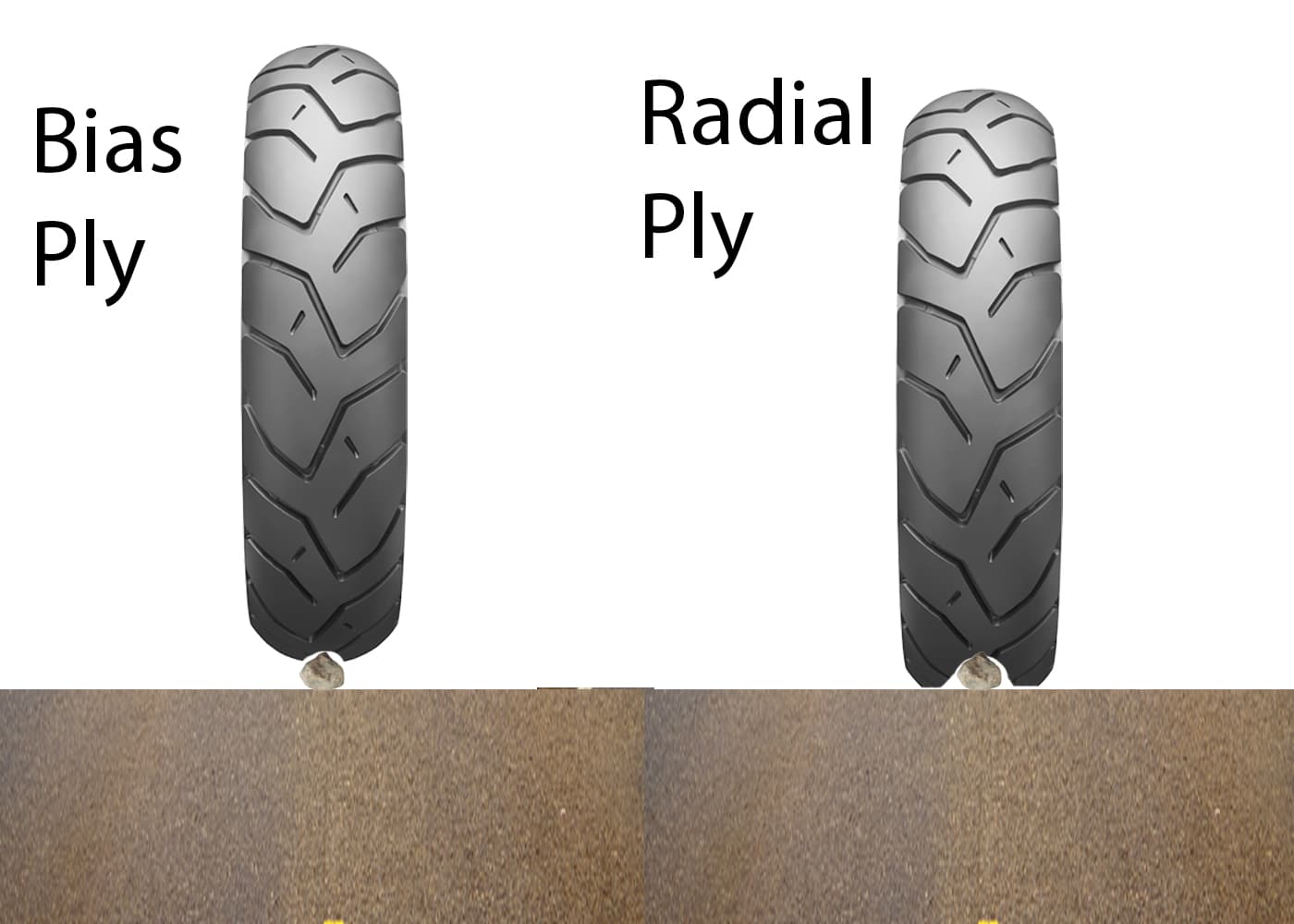
Credit: motorcyclehowto.net
Conclusion And Future Outlook
Exploring the world of motorcycle tires, we see two stars: bias ply and radial. Each has unique features. Riders must choose wisely for the best experience. Which tire reigns supreme? Let’s wrap up our findings and peek at the road ahead.
Summary Of Key Differences Between Bias Ply And Radial Tires
- Bias ply tires have crisscrossed cords with a sturdy sidewall.
- Radial tires boast cords running at 90 degrees from the tire center.
- Flexibility: Radial tires flex more, boosting contact with the road.
- Stability: Bias ply tires excel in load-carrying stability.
- Heat: Radial tires disperse heat better, leading to a longer life.
The Future Of Motorcycle Tire Technology
The tire realm is evolving. New materials and designs aim to raise safety and performance. Expect tires to get smarter, possibly with sensors to warn riders about wear or adverse conditions. Eco-friendly tires may also emerge as a response to environmental concerns.
Final Thoughts On Selecting The Best Tire For Your Riding Style
Your choice in tires should align with your riding habits. For rough terrains, bias ply might be your ally. For smooth cruising, go radial for better grip and comfort. Always balance your needs with the tire’s strengths. Safe riding hinges on the right decision.
Frequently Asked Questions On Bias Ply Vs Radial Motorcycle Tires
Is Radial Or Bias Better For Motorcycles?
Radial tires typically offer better handling and cooler running temperatures for motorcycles, while bias tires can be more durable and cost-effective for certain rides. Choose based on your specific riding style and motorcycle requirements.
Are Radial Tires Better Than Bias Ply?
Radial tires generally offer better performance than bias ply, providing improved handling, fuel efficiency, and longer tread life. They are the preferred choice for most modern vehicles.
How Do I Know If My Motorcycle Tires Are Radial Or Bias?
Check your motorcycle tires for markings: “R” indicates radial, while the absence suggests bias-ply. Also, look for a construction code, such as “B” for bias or “R” for radial.
What Is A Major Disadvantage Of A Bias Ply Tire?
A major disadvantage of bias ply tires is reduced tread life and poor heat dissipation compared to radial tires.
Conclusion
Selecting between bias ply and radial tires for your motorcycle hinges on several factors. Consider your ride style, bike type, and typical routes. Both offer unique benefits, with radials excelling in stability and bias ply in durability. Ultimately, your choice should enhance your riding experience and safety on the road.
Embrace the journey, equipped with the right tires!
